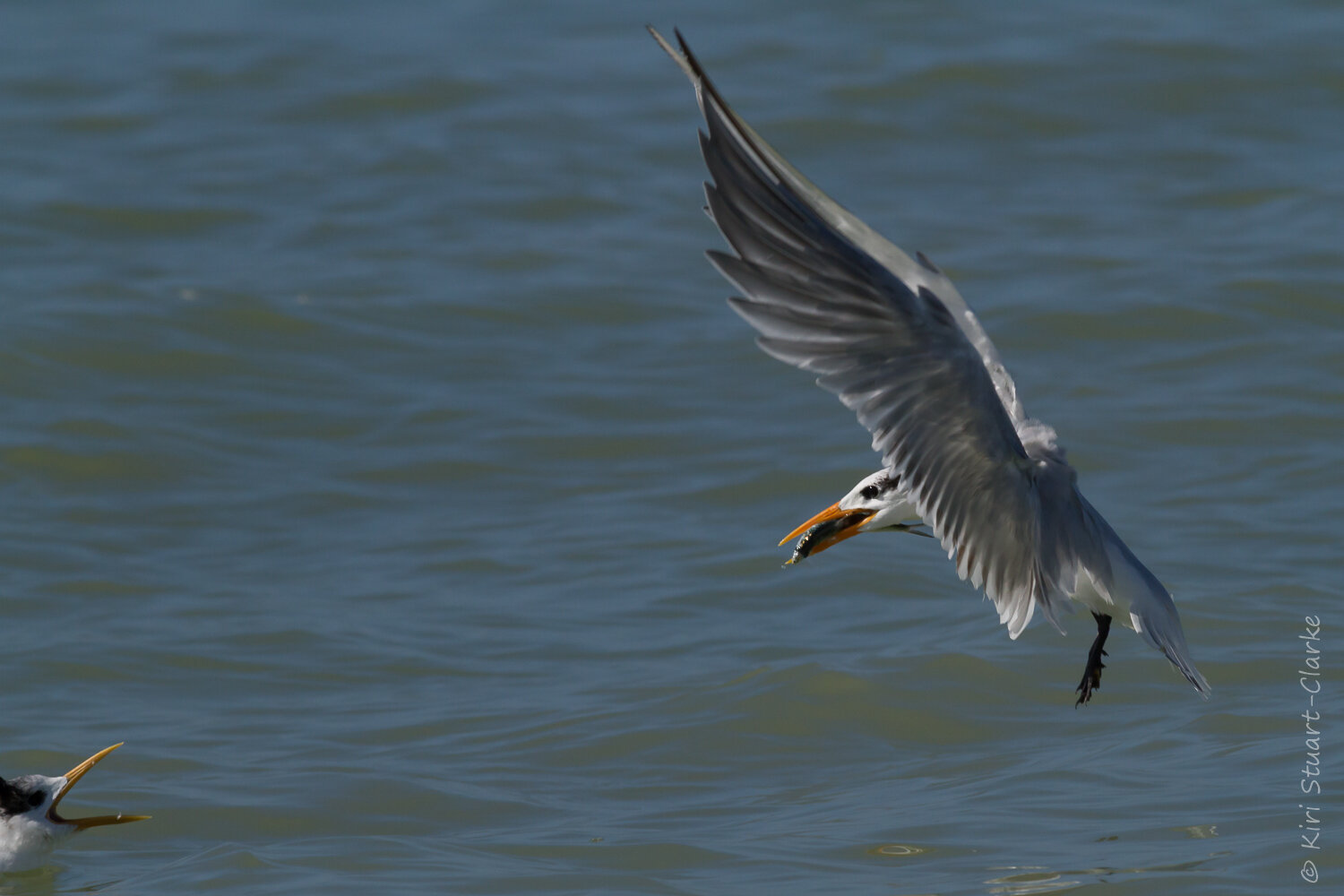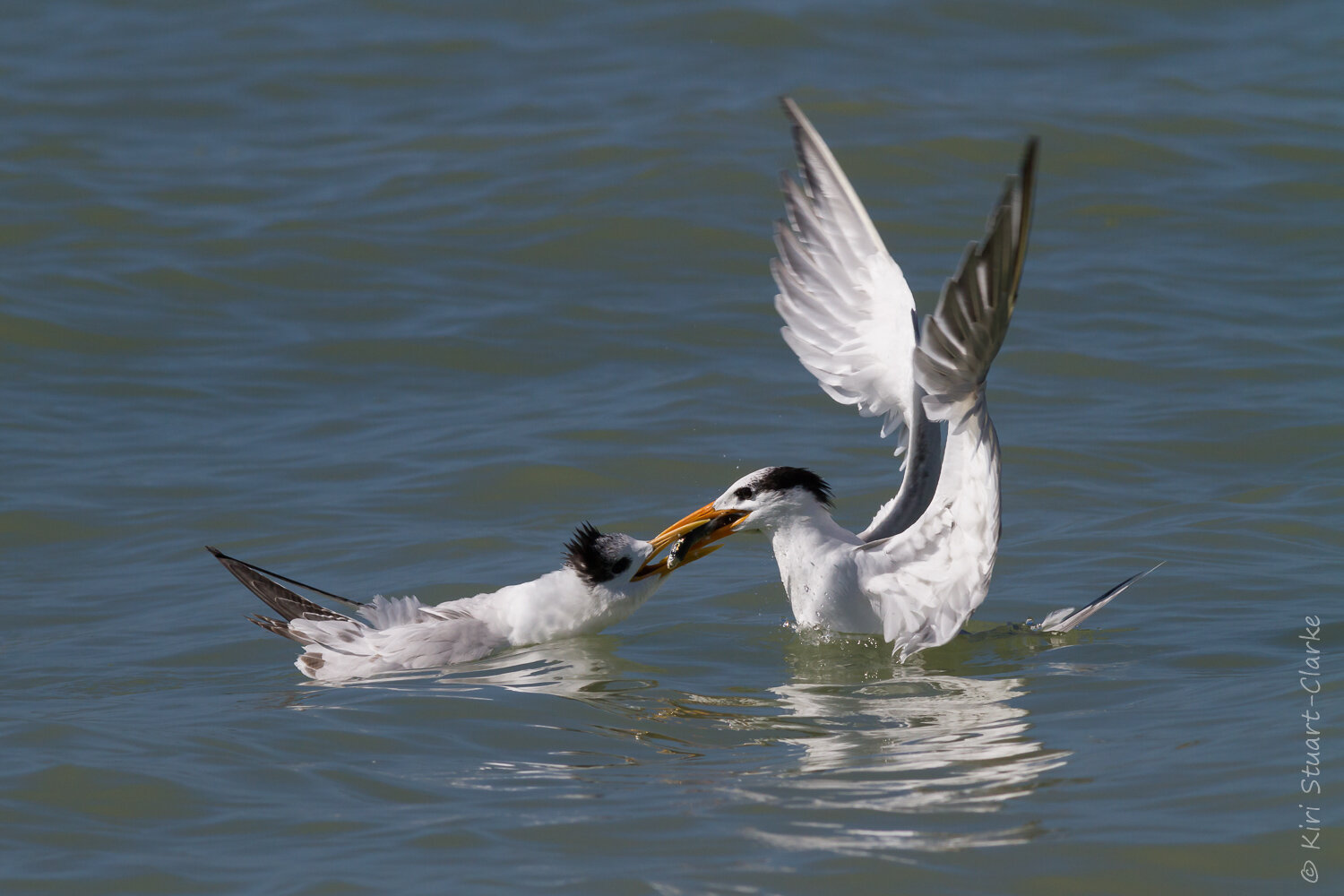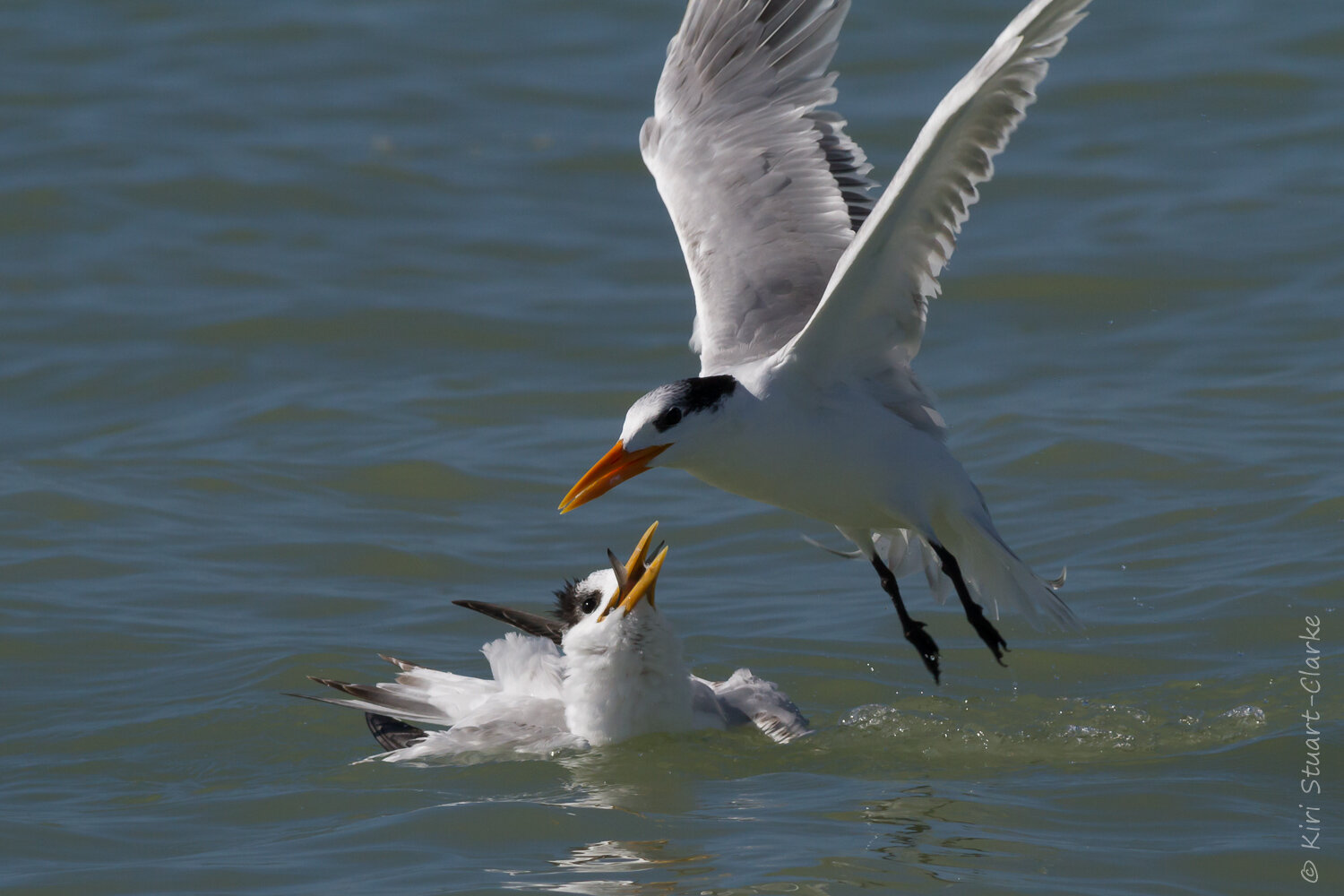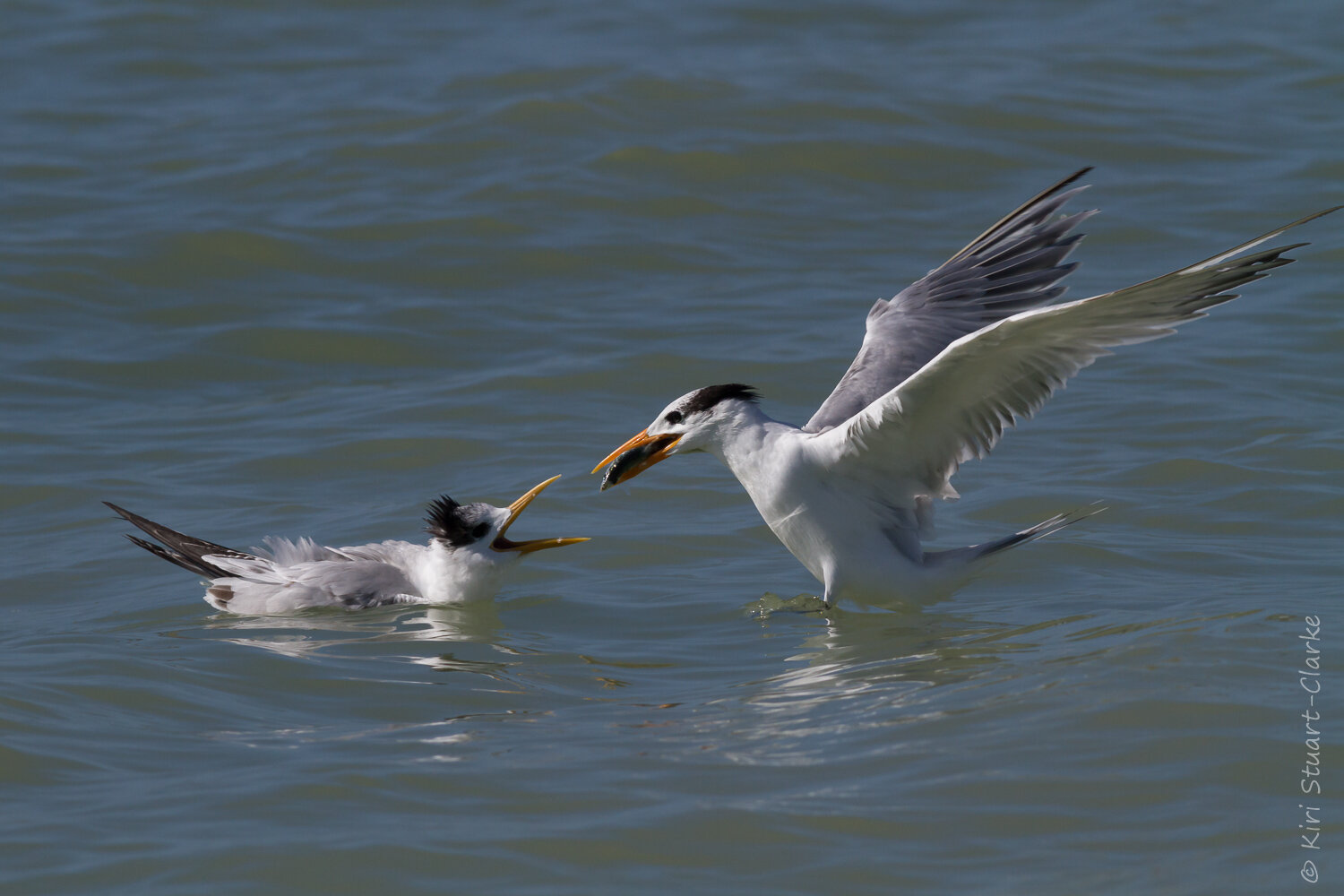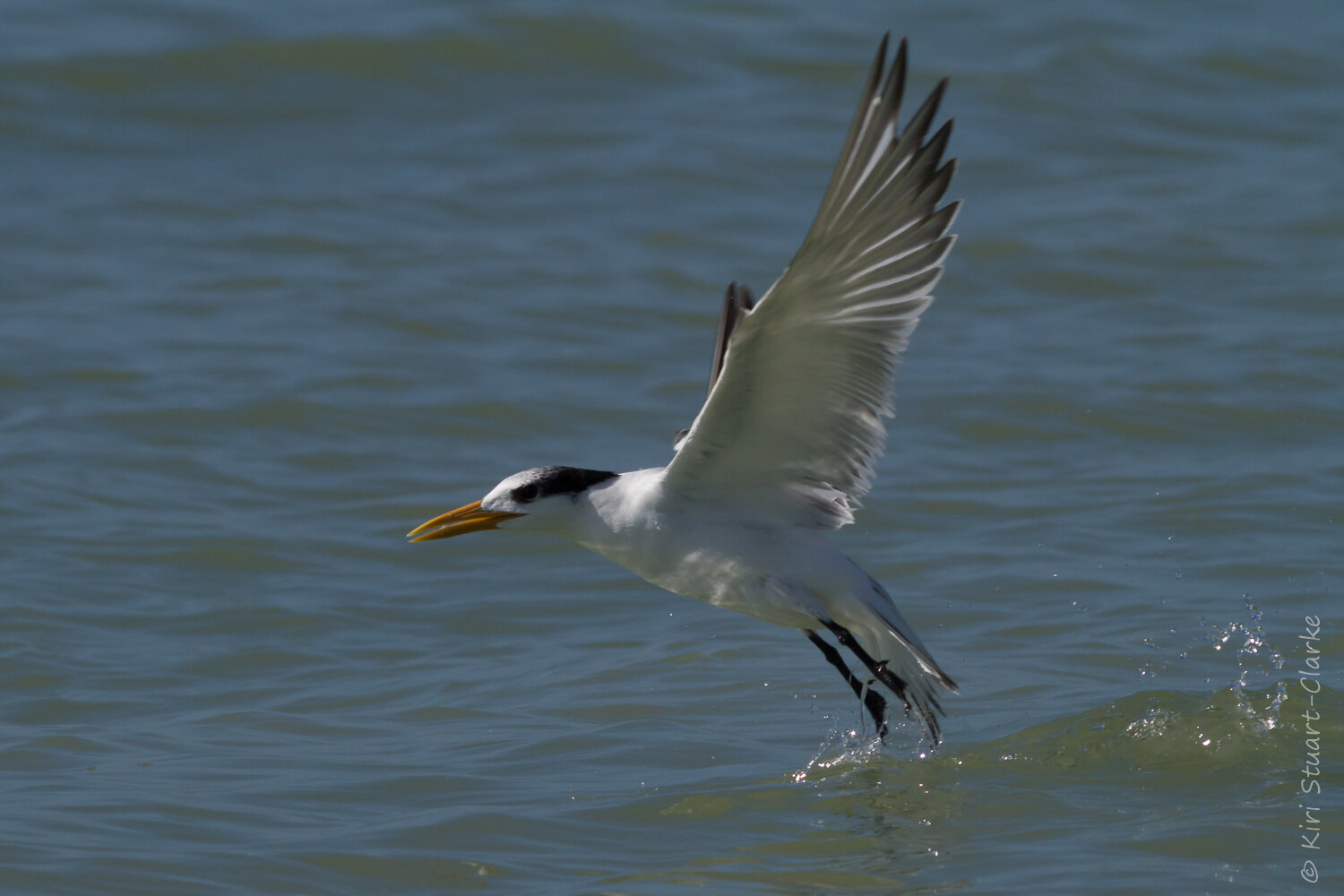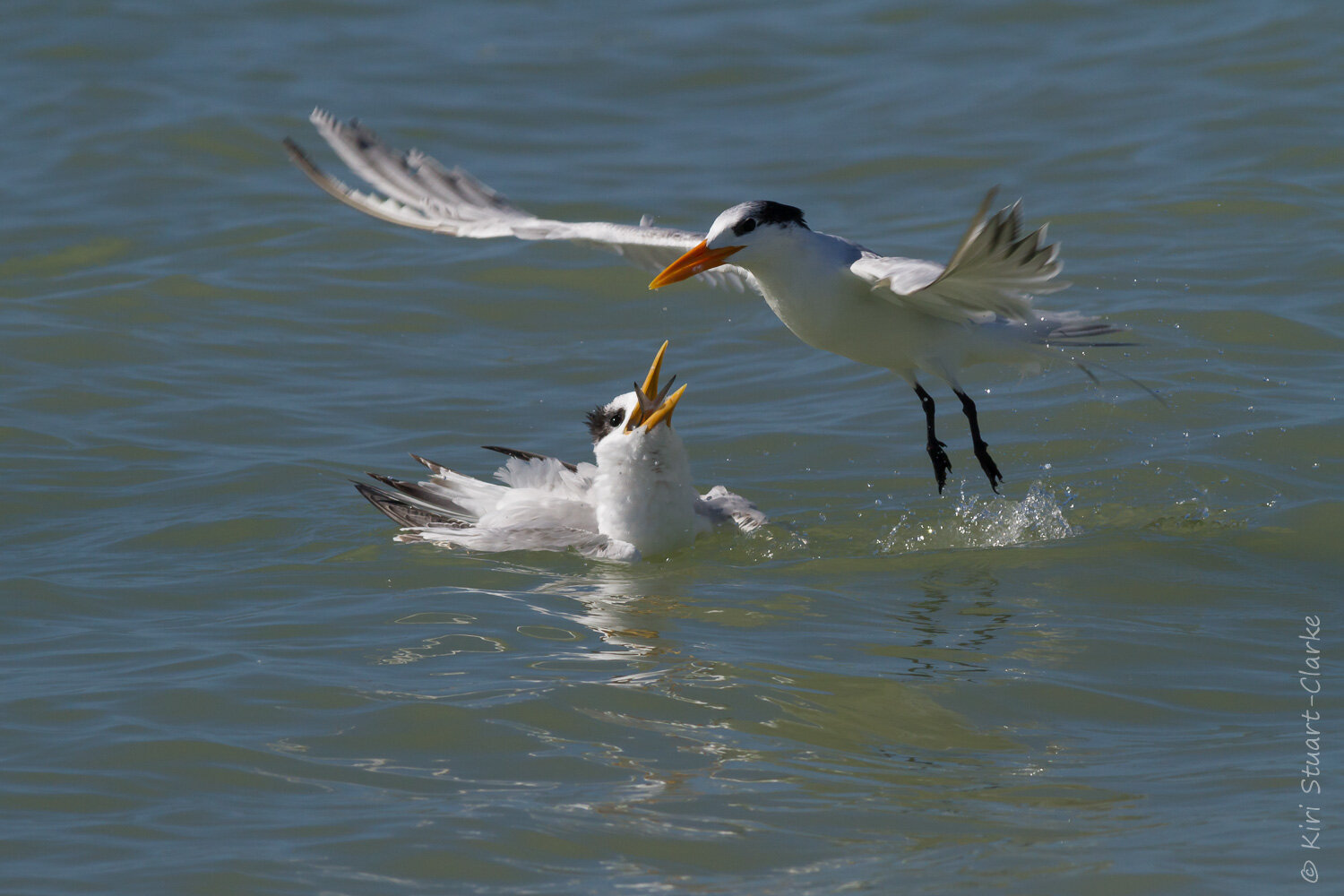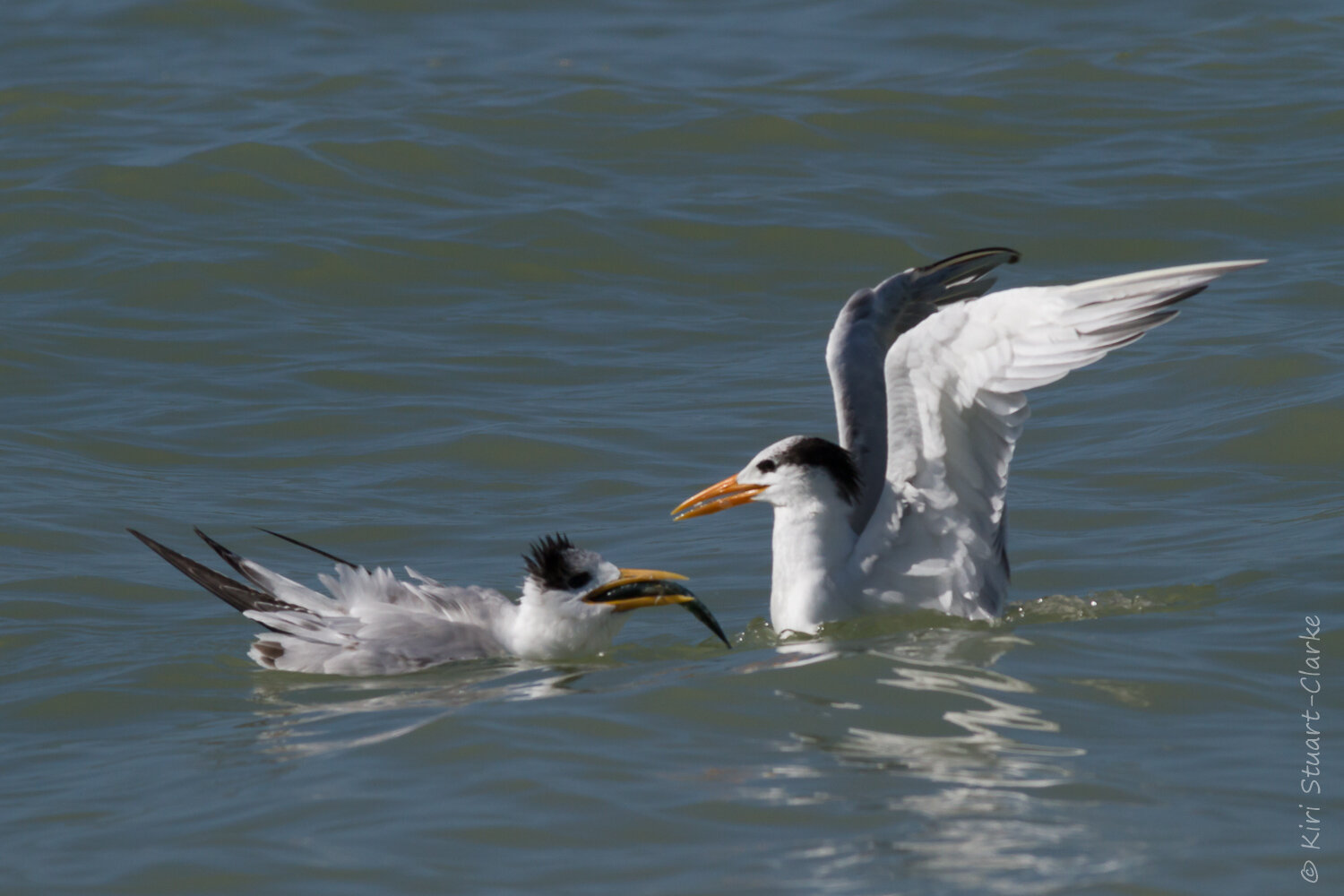Sea birds are one of our favourite birdwatching species in Britain and in November I took a much needed trip to Fort Myers in Florida and spent a lot of time bird watching and of course photographing on Sanibel Island as well as in their famous Ding Darling Preserve. My highlight from the trip was undoubtedly a day on Bunche Beach where a tern colony consisting of Royal terns, Sandwich terns and Forster's terns had all set up camp for winter.
Many of the birds were fledglings still being fed by their parents. It was great to see the hustle and bustle of the tern colony with individuals taking off and returning from their feeding trips.
One of the Royal tern fledglings was floating on the water and from the corner of my eye I saw one of the adult Terns returning with a fish fly in towards him. The adult swooped in until his feet dipped in the water and transferred the fish into the hungry youngster's gaping beak before agilely lifting off again for another hunting expedition. It all happened in a few seconds and was incredible to watch.
